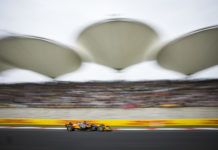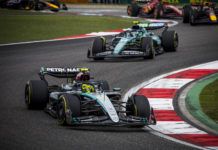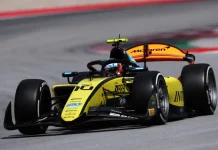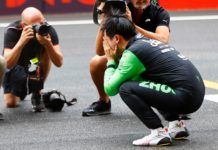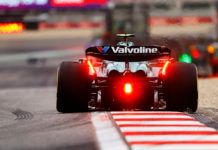F1 Managing Director Ross Brawn has highlighted the importance of TV commentators, social media and journalists in the sport’s growth.
For any sport to succeed, there are has to be a common link between the consumers and the producers. For a general product, advertisement forms the desired link which is similar for a sporting event too.
The key component for a sporting event is broadcasting, whether through television or radio as they are the first step through which the fans can actually consume the sport from anywhere, if not traveling themselves.
Then comes journalists, on whom fans depend on knowing more on what was said pre or post the event and get the general announcements. It was different in old times with newspapers the biggest source.
But times have changed and social platforms have increased along with websites, which provides news quick and fast. The success of the sport depends on how these links portray the event as.
F1 MD Brawn highlighted the importance of how the above convey the story to the fans. After the highs of the last three grand prix, the F1 Singapore GP provided a different type of intense racing.
Teams had to rely on strategy hugely and despite not having the best race pace, Ferrari took an unlikely 1-2 finish with Mercedes not even featuring on the podium – only the second race where they failed to do so in 2019.
“While Sunday’s Grand Prix perhaps failed to deliver the same tension as the late summer races – I’m thinking of the dramatic events in Budapest, Spa and Monza – it was, in my opinion, still a fascinating and intense race,” wrote Brawn in his post-race column.
“It was clearly a different type of show, especially in terms of the fight among the top teams. The six drivers at the front of the pack might not have gone wheel-to-wheel but, assisted by their strategists, they instead played an intriguing game of chess.
“In races like these, the role of television commentators and commentators on social platforms are particularly important. Indeed, the latter are becoming more and more important in an era when the use of second screens to more closely follow a race is becoming prevalent.
“The way TV graphics can enrich the race experience for viewers is an area we are working on a lot, discussing on an almost daily basis with the broadcasters ways of improving the product they bring into people’s homes around the world.
“Also important is the role of journalists who analyse after the event, passing the information on to readers. One of the most fascinating aspects of F1 is its ability to provide a show in so many different ways: a qualifying session fought out to the nearest thousandth of a second, a duel for victory that lasts all race and is won through strategic blows and counter punches between two teams made up of dozens of engineers.
“We all have to work together to get even more fans to fall in love with this sport, especially those described as ‘casual viewers’.” Staying on the topic with TV and fans, Brawn also clarified some of the comments made.
The weekend had talks about reverse grid races, a question which was put forward in the press conference but not in the clear way. The idea being discussed is for reverse grid qualifying races at certain tracks in 2020.
The basic concept would be a full reverse grid of about 20-25 laps on Saturday on only selected tracks, while the finishing order could determine the grid for Sunday but it is yet to be fully discussed.
Brawn put it down as an experiment as well which is not yet confirmed. “In recent days I’ve read a variety of statements from drivers and pundits concerning ideas to make the race weekend format more spectacular,” he wrote.
“To try to clarify the situation and avoid misunderstandings, there are discussions about experimenting in 2020 with changes to the qualifying format with the aim of making a Grand Prix weekend a little less predictable.
“I want to emphasise the word ‘experiment’ because this is what it is about – a small sample to establish the directions for the future. We are all too aware that the current qualifying format is exciting and spectacular but what is also important is to make sure that the race, the highlight of the weekend, is the best it can be.
“And since, no matter how many simulations you run, there’s no measure more accurate than the track, Formula 1, the teams and the FIA are studying the possibility of a revised format for a small number of events for next season.
“With stable sporting and technical regulations in place for 2020 it is the perfect time for such evaluations. No decision has been taken yet because we are finalising all the details, but feedbacks received so far are, in the majority, positive.
“I understand that the purists might be concerned, but we should not be afraid to conduct an experiment otherwise we cannot progress. We don’t want change for the sake of change; we want to improve our sport, because, rather like the development of the cars, if you stand still you risk slipping backwards.”
Read how 2019 F1 Singapore GP panned out
Valtteri Bottas says he knew Mercedes strategy for Singapore GP
Haas found plastic in the car of Kevin Magnussen – photo
Sebastian Vettel emotional after Singapore GP and recalls fan messages
Mattia Binotto on Singapore GP strategy to cover Max Verstappen
Daniel Ricciardo unhappy with qualifying disqualification


